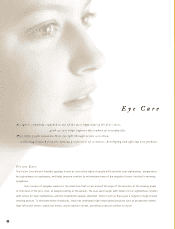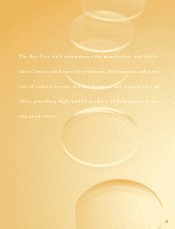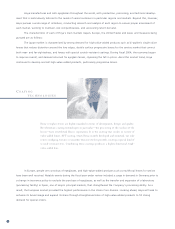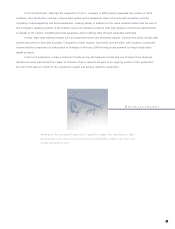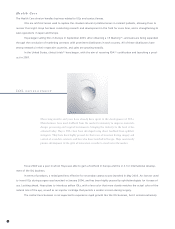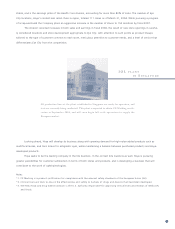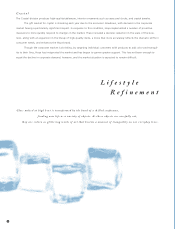Pentax 2004 Annual Report Download - page 26
Download and view the complete annual report
Please find page 26 of the 2004 Pentax annual report below. You can navigate through the pages in the report by either clicking on the pages listed below, or by using the keyword search tool below to find specific information within the annual report.
Environmental Efforts
24
Environmental issues are increasingly becoming a management priority at many companies. Hoya established pollution
countermeasure committees at each of its factories in 1976, and since that time has made ongoing efforts toward environ-
mental protection.
Hoya published its second environmental report, outlining the Company’s environmental initiatives, in 2002. During
fiscal 2004, Hoya worked to improve its environmental performance, as outlined below.
REDUCING THE BURDEN ON THE ENVIRONMENT
Hoya has focused on four areas in which continuous efforts are made to reduce the environmental burden per unit of net
sales.
1. ENERGY CONSUMPTION
Hoya has implemented a thorough energy conservation program encompassing all of its business divisions. At the
facilities level, buildings have been properly insulated, while pumps and clean room air-conditioning motors have
been converted to energy-efficient inverter types. Energy conservation has also been extended to the human envi-
ronment, with temperature controls and more efficient lighting systems. As a result, the ratio of energy consump-
tion to net sales in fiscal 2004 declined by approximately 8% from the previous fiscal year.
2. WATER USAGE
Although we increased water recycling and water conservation efforts, which served to decrease the amount of
water usage approximately 53,000m3, its ratio to net sales was held to approximately 1% compared with previous
fiscal year.
3. WASTE VOLUME
The recycling of concrete sludge, the thermal recycling of waste plastic, and the reuse of organic solvents resulted
in a decline in the ratio of waste volume to net sales of approximately 27% from the previous fiscal year.
4. VOLUME OF PACKAGING MATERIALS
A review of packaging methods and reuse of the cardboard boxes used to ship products led to a decline in the
ratio of packaging material volume to net sales of approximately 15% from the previous fiscal year.
HOYA 2004-e 入稿用0705 04.7.22 8:01 PM ページ 25


